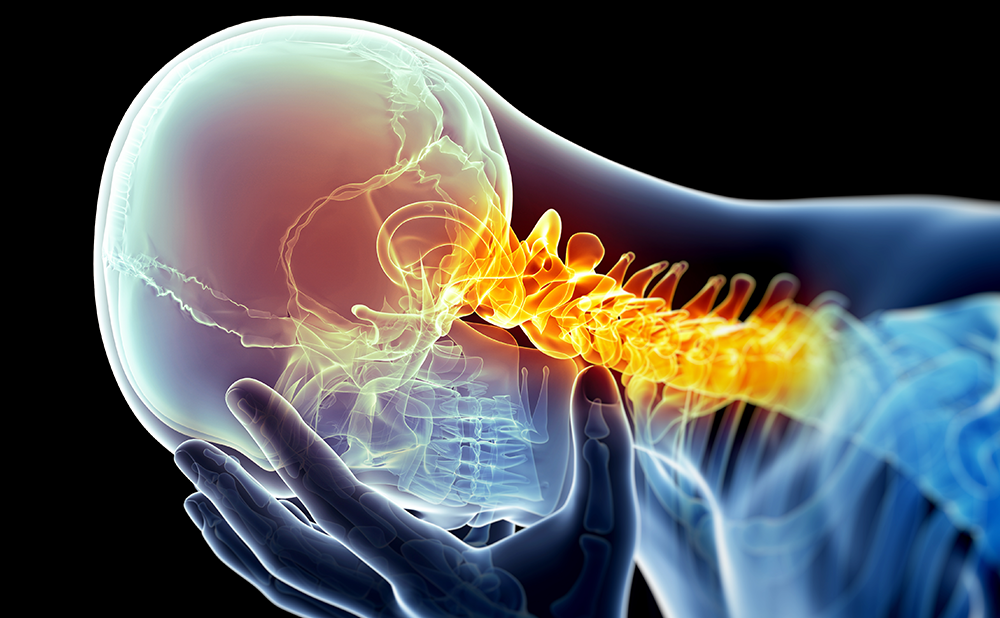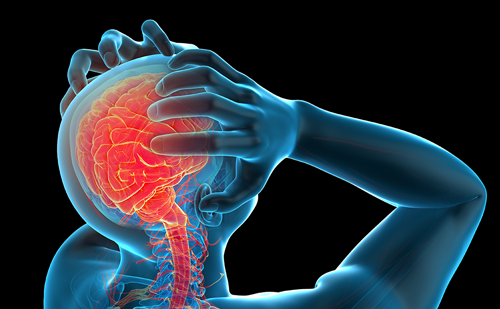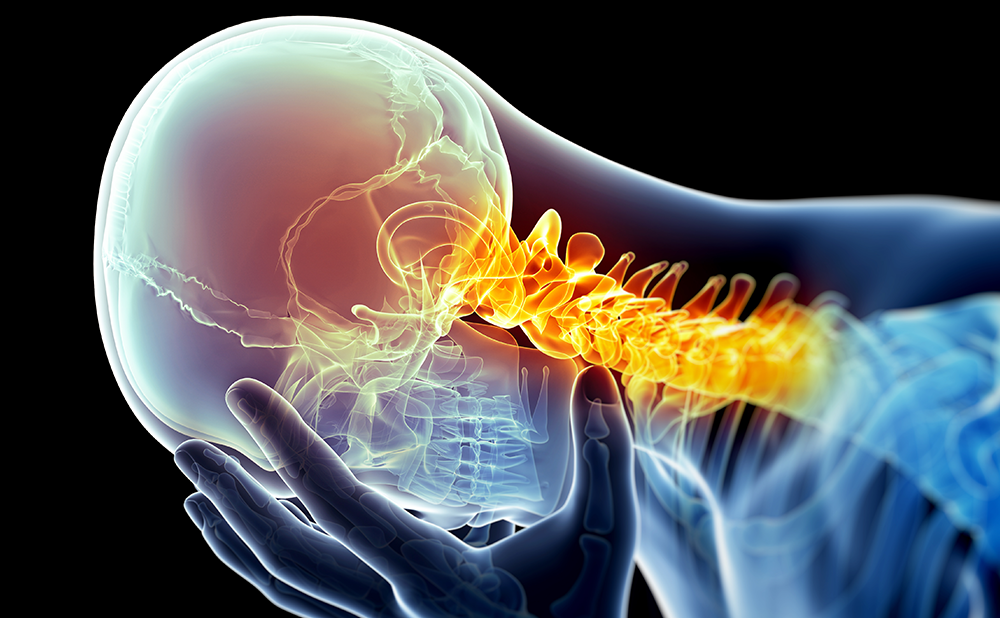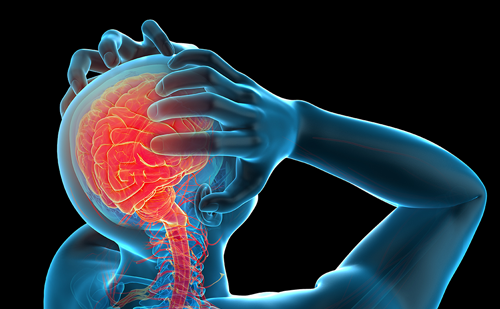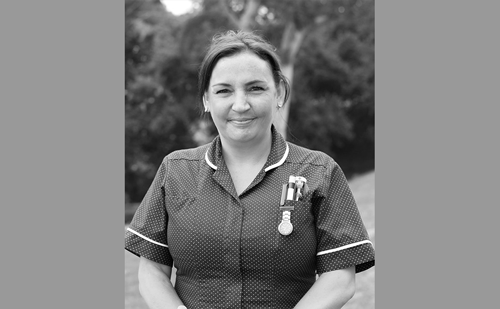Current treatments (e.g. acute and preventative medications, physical therapy, nerve blocks, cervical decompression, and surgical interventions directed at eliminating the genesis of pain) help many migraine patients; however, a subset of patients either do not achieve adequate pain relief or cannot tolerate the side effects of typical migraine medications.5 Patients whose migraines are refractory to standard medical treatments sometimes overuse their acute medications; medication overuse is associated with rebound headache, which intensifies and prolongs headache symptoms. The International Headache Society (IHS) defines medication overuse as 10 or more days per month of using triptans, ergotamines, analgesics, combination analgesics, narcotics, or any combination of ergotamines, triptans, analgesics, and/or opioids; or 15 or more days per month of using simple analgesics.6 Estimates for the number of medication overusers range from 5 to 10% of all headache patients and 50% or more of patients who are treated in headache clinics. Evidence supports the emerging view that migraine is progressive in a subgroup of migraineurs, thereby heightening the importance of early intervention.7 As the frequency and magnitude of headaches increase, it appears that central sensitization also develops, lowering the thresholds for triggering migraines and heightening resistance to treatment. Because a significant number of patients have treatment-refractory migraines, alternative treatments are needed. One promising alternative is the electrical stimulation of the occipital nerve via an implantable pulse generator. This technique is supported by clinical practice and a limited but growing amount of literature showing it to be a safe, effective treatment for headache disorders.
Literature on Occipital Nerve Stimulation for Headache
Research is increasing in the area of occipital nerve stimulation (ONS) for the relief of headache disorders, particularly in the population of patients whose headaches do not respond to prior treatments. Many studies of ONS have been directed toward the treatment of occipital neuralgia.8 12 Some additional studies are available for gauging the effect of ONS on migraine13 15 and other types of headache.16 18 Efficacy and safety data in the literature are mostly retrospective analyses, case series, or uncontrolled trials; however, the results of systematic randomized trials to test ONS for migraine will soon be available. The history of peripheral nerve stimulation began with tests of large fiber stimulation that took place in the 1960s.19 ONS is accomplished by means of an asymmetric biphasic electrical pulse applied to the tissue surrounding the occipital nerve, a process that depolarizes the nerve and sends electrical impulses anterograde and retrograde through the nerve, with the anterograde signals ending in the trigeminocervical complex.20,21 The technique appears to mitigate the frequency and severity of migraines in some patients.
Technically, the procedure requires an electrical lead to be advanced through a needle until it is adjacent to the nerve. Patient perception of paresthesia (tingling) is used to optimize placement of the contacts on the lead. The leads are fastened to the fascia after a skin incision, then tunneled to a site in the torso where the implantable generator is placed in the subcutaneous fat. Bilateral leads generally have been found to be superior to unilateral leads in clinical practice.22 Early trials that involved intractable headache used cuff electrodes surgically placed around a peripheral nerve and reported some success in the relief of occipital neuralgia.8,9 The past decade saw the introduction of a new technique whereby subcutaneous cylindrical electrodes were placed to stimulate the distal branches of the C1-2-3 spinal nerves as they converge to create the occipital nerve. Results were encouraging: in one study of 13 occipital neuralgia patients, 66% of patients achieved greater than 75% pain relief, and 33% achieved 50 75% pain relief.10 An 18-month study of transformed migraine patients with severe disability recorded an 88.7% reduction in migraine disability following stimulation using the same technique.13 All patients in that study reported their headaches to be well controlled following the implant.
The mechanism of ONS for migraine benefit is not altogether clear but may be due to a central modulatory effect linked to the convergence of C2 afferents and trigeminal afferents at the second order neurons in the trigeminocervical complex.20,21 Positron emission tomography (PET) imaging studies demonstrating modulation of activity in more central areas, including the thalamus and anterior cingulate cortex, suggest that ONS may also have a more central effect.14,18 Matharu and colleagues observed a metabolic response in the anterior cingulate gyrus using PET imaging, indicating a dose response to implanted bilateral suboccipital stimulators in eight patients with chronic migraine.14 The effect of stimulation at optimal settings with paresthesia was a complete suppression of headache within 30 minutes. When the stimulation was switched off, headache recurred and peaked within 20 minutes. All patients maintained improvement for an average of 1.5 years and either discontinued or reduced the headache medications they were previously taking.
Adverse Events and Clinical Considerations
The most frequently reported adverse event has been lead migration, requiring surgical revision. Oh and colleagues tested the use of a subcutaneous paddle-style electrode and found it may have advantages over cylindrical styles for reducing lead migrations from tension and dislodgment.15 In that study, adverse events for 10 patients with occipital neuralgia and 10 patients with transformed migraine included infection and allergy, but pain relief was good or excellent in all patients at one-month follow-up.
A recent retrospective analysis of ONS for intractable headache that reported improvement in all headache measures from baseline also concluded that surgical revisions may be commonly required.17 Of 15 patients who underwent unilateral or bilateral lead placement to implant an occipital nerve stimulator, 60% required lead revision within one year, and one patient needed generator revision. New surgical techniques currently undergoing testing show promise for offering a lower incidence of lead migration and revisions (The PRISM Study, unpublished data, Advanced Bionics, 2007). Precise electrode placement is a key factor in achieving successful stimulation.23 Patients often benefit from upgrading to bilateral from unilateral stimulation: one patient with chronic cluster headaches initially received unilateral stimulation but converted to bilateral stimulation after continuing to experience headaches on the other side.16 After the first five months and some adjustments, the patient experienced a 90% reduction in attack frequency and was able to taper all medications. ONS has been shown to reduce medication overuse in migraine patients.13 15 Patients who do not achieve or who lose paresthesia tend to experience immediate relapse to headache symptoms.13,14
Current Research
In the near future, more detailed answers will be available as to the value of ONS for medication-refractory migraine. A randomized, multicenter, doubleblind study with 179 patients enrolled at 13 sites is in progress and expected to complete in 2007 (The PRISM Study, unpublished data, Advanced Bionics, 2007). This study was designed to test the safety and efficacy of ONS using bilateral leads for migraine with the objective of reducing the number of migraine days, thus reducing dependence on pain medication and allowing patients to resume normal activities. To meet inclusion criteria, patients in the study had to meet IHS migraine diagnostic criteria, suffer from multiple migraine days per month, and respond poorly to current migraine therapies.
A separate feasibility study to test ONS for intractable migraine has enrolled 68 patients at nine sites who have proved unresponsive to at least two classes of headache medication (The ONSTIM Study, unpublished data, Medtronic, 2007). Inclusion criteria required a diagnosis of chronic migraine headache as defined by the 2004 IHS criteria, which included migraine headaches occurring on 15 or more days per month for more than three months in the absence of medication overuse. This prospective, randomized, double-blind study was designed to obtain preliminary safety and efficacy data for ONS.
Conclusion
To date, the available data suggest that ONS may be an effective, minimally invasive, and easily reversible treatment for several varieties of headache pain. The results of randomized controlled trials to study the safety and effectiveness of ONS for migraine are forthcoming. These two studies should help define the role that ONS may offer to a subset of chronic migraineurs.


